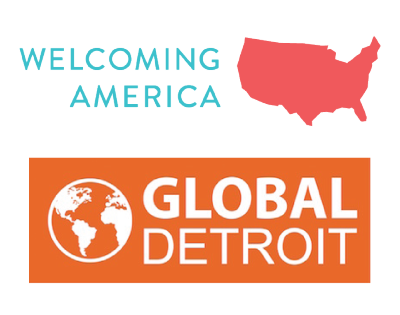Welcoming America’s Guide to Immigrant Economic Development Released
/in All Blogs, Immigrant Small Business Owners, Immigrant Entrepreneurs, H-1B Visas, Immigrant Retention, Diversity, Convening 2015 /by gglnadminAre you looking to start an initiative to spark growth in your city and local economy by better integrating immigrants and the skills, entrepreneurial spirit, talent, and energy they bring to local economies?
Or maybe you want to enhance an existing immigrant economic development effort?
Welcoming America’s new Guide to Immigrant Economic Development provides guidance for building or growing a regional infrastructure to welcome, support, nurture, and integrate immigrants and refugees in your region in a manner that can both create more meaningful opportunities for immigrants and refugees, and that can provide tangible benefits and opportunities to receiving communities. This guide showcases the role immigrants play in economic growth, job creation, and prosperity for their community. Chapters contain best practices, strategies, and models that can inform those working in the fields of economic development and immigrant integration.
The Guide responds to the growing demand from communities looking to start or enhance an initiative to spark growth in their city and local economy by better integrating immigrants and the skills, entrepreneurial spirit, talent, and energy they bring to local economies. As more communities in the Rust Belt recognize the value of immigrants to their local economies, this guide can provide a framework to help them develop their own initiatives based on their local needs and infrastructure.
The Guide’s 14 chapters:
- Getting Started
- Entrepreneurship
- International Student Retention
- Workforce Development
- Highly-Skilled Worker Initiatives
- Connector Programs
- Rural Development
- Immigrant Investor Visas
- Export Promotion
- Corporate Diversity and Inclusion
- Encouraging Homeownership
- Urban Agriculture
- Integration Services
Check out the Guide to Immigrant Economic Development by visiting:
www.welcomingamerica.org/guide-immigrant-economic-development
H-1B Day of Action Recap
/in All Blogs, Immigrant Entrepreneurs, Immigrant Entrepreneurship, H-1B Visas, Immigrant Retention /by gglnadminOn Thursday, April 9th, two days after the federal government closed the H-1B application process for FY 2016, WE Global Network members and partners across the region, especially our partners at the Great Lakes Metro Chambers of Commerce, joined together on a Day of Action to spread the word that immigrants can be a critical piece of our economic growth in the Midwest. Specifically, nearly a half dozen WE Global members held press conferences, issued press releases, and wrote letters to the editor highlighting that immigrants are helping Midwest companies fill unmet talent needs and providing our region some of the world’s best and brightest so that our local companies expand and are able to hire additional Americans.
The H-1B cap is not just an issue for Silicon Valley or the coasts. In fact, according to new research from the Brookings Institution, metro areas like Detroit and Chicago utilized more H-1B visas recently than Boston, the Research Triangle, or Seattle.
Yesterday, the federal government released the actual number of H-1B applications filed during the five-day period starting April 1, 2015 during which applications were accepted. Again, the nation’s demand for H-1B talent reached a new record high with 233,000 applications filed for the 85,000 visas. This is a 35 percent increase from the 172,5000 filed in April 2014. This is a pretty startling statistic when you consider that it can cost an employer some $5,000 to file the application and, based upon historic trends, employers are really only likely to have a 50 percent chance of their application winning the H-1B lottery (a chance that has declined to 36 percent this year).
In any event, last week’s WE Global efforts helped spread the word about this issue in areas of the country that may have lower immigration numbers and that may be unaware of the issue’s importance. Below is a collection of the media generated:
Cleveland
- Ohio.com Article
Buffalo
- Buffalo News article
Detroit
- Detroit Free Press Article and Editorial
- Detroit News Blog
- Crain’s Detroit Business Article
- Michigan Public Radio Story
- NBC News Story
Pittsburgh
- Pittsburgh Post-Gazette Editorial
- Press Release from Mayor Bill Peduto
- #BurghH1B Social Media
St. Louis
- St. Louis Business Journal Article
- Press Release from St. Louis Mosaic
- St. Louis Post-Dispatch Article
Toledo
- Welcome TLC April 9 social media postings

